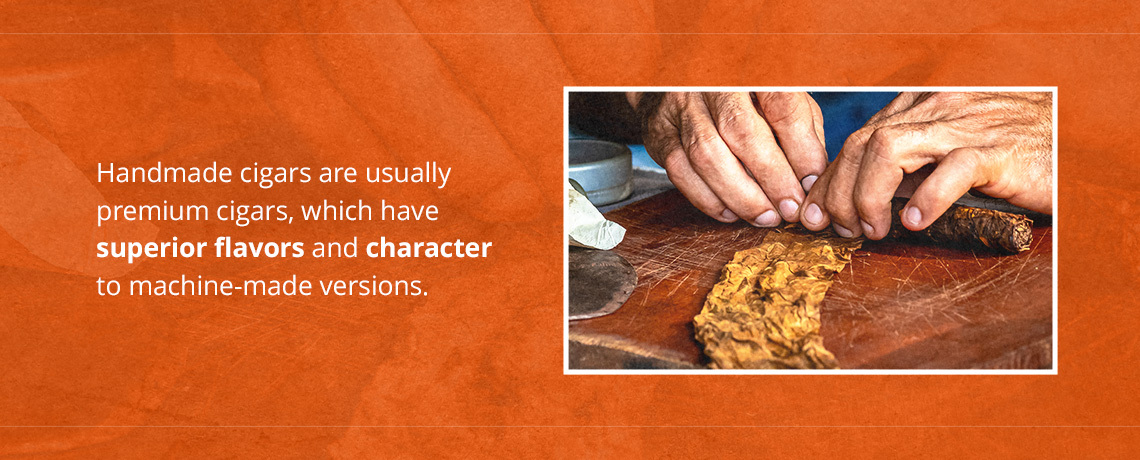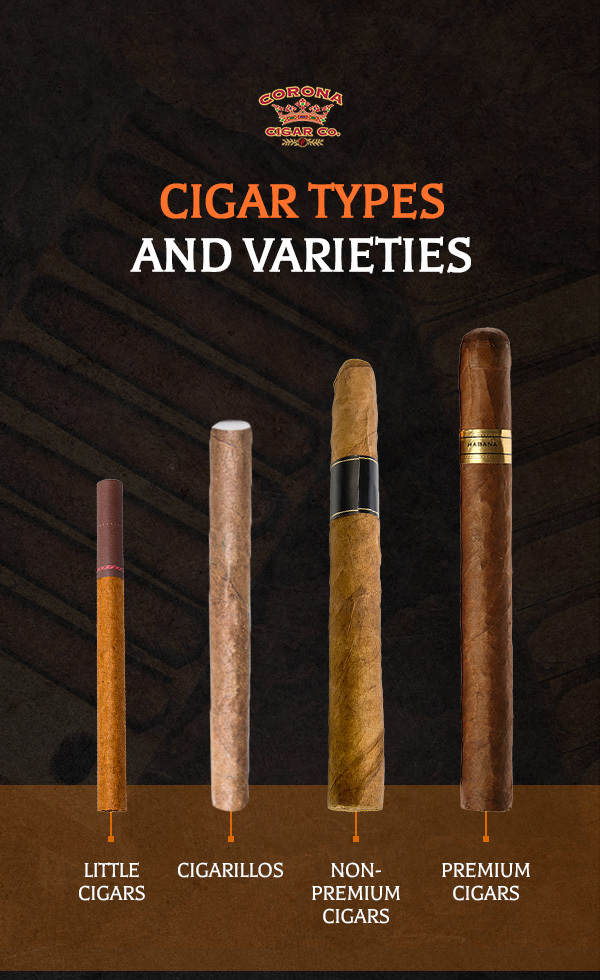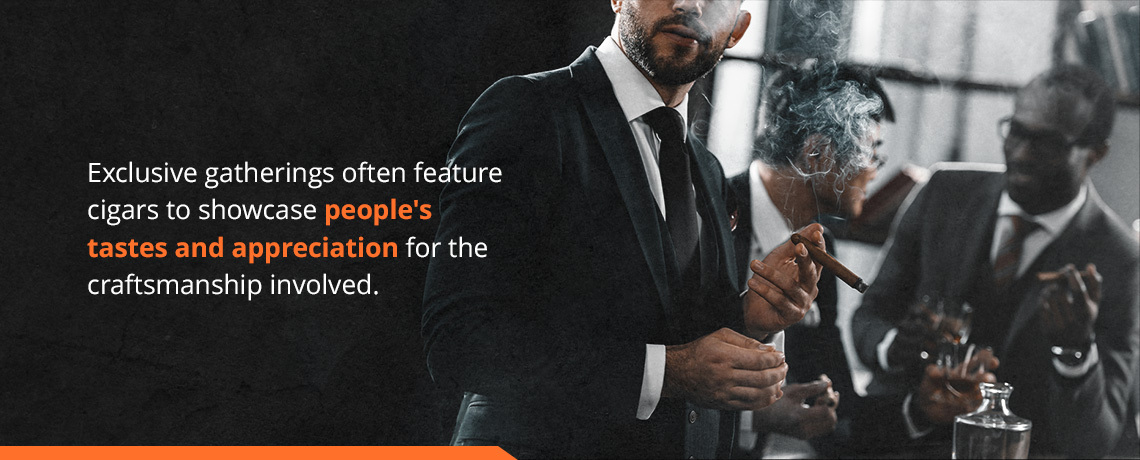The History of Cigars: From Seed to Smoke
Jul 18 2025
The history of cigars is fascinating. Every country where cigars have been introduced has changed culturally and economically. A seed as small as a candy sprinkle has brought enormous changes throughout history until the present moment. From using tobacco for ritualistic purposes to smoking cigars as a luxurious activity, the seed has come a long way in its development.
That’s not to say that there weren’t any challenges along the way. If you’re interested in where cigars originated and how they evolved to what they are today, this article has everything you need to know.
Who Invented Cigars?
The invention of cigars dates back to 2500 B.C. before spreading across Europe and the world. Here’s a breakdown of their history.
Origins

Historically speaking, the Maya were the civilization that made the first cigars with their use of the tobacco plant in many rituals. Smoking tobacco was more common to the Maya than any liquid consumption. During the Age of Discovery in 1492, Christopher Columbus discovered this tobacco and imported it to Europe.
The primitive form of cigars looks like twisted and dry tobacco rolled in leaves, with dried corn husks used as wrappers. Smoking tobacco later spread to the Spanish, Portuguese and other Europeans who caught the habit. Some historians believe that the word cigar came from “sik’ar,” which is the Mayan-Indian word for “smoking”, while others say it’s from the Spanish word “cigarrar,” meaning “to roll.”
When Mass Production Started
People started using tobacco in its various forms during the 16th century. By the 17th century, the first commercial tobacco companies appeared, which sparked mass production. Small factories started in France, Germany and the Netherlands. Britain followed at the start of the 19th century. The Act of Parliament in 1821 provided the regulations to govern the production.
Import tax made importing cigars costly, which meant they could only be smoked by the wealthy, and that foreign cigars were considered a luxury item. In spite of this, smoking became so universal that in the middle of the 19th century, smoking rooms and compartments were constructed in hotels, clubs and trains. Smoking jackets were also popularized to prevent the aroma of cigars from clinging to people’s attire.
Eventually, Cuban cigars outperformed other cigars and were mass-exported. During this time, 400 Cuban cigar factories were established. By then, cigarettes or paper cigars also appeared as a cheaper alternative, and their rise in popularity was in part due to cigarette-making machines. This led factories in Cuba to also create machine-made cigars that have slowly outpaced handmade cigars.
Cigars in the United States

Cigar factories started in Connecticut, Pennsylvania and New York in the late 18th century. One factory in Pennsylvania first produced the long cigar called a “stogie”, which was later used to refer to any workingman’s cigar. Americans also imported Cuban tobacco to produce the more expensive cigars.
Cigar smoking boomed in the U.S. around the time of the Civil War, when individual brands emerged. Cigars also became a status symbol, partly due to well-respected figures like President Ulysses S. Grant and Mark Twain. Cigars peaked in 1907 but waned in popularity due to cigarettes.
How Are Cigars Made?
Cigar production was different historically compared to how it is today, thanks to the switch from handmade cigars to machine-made versions. Although you can still enjoy both options today, here are the differences in their processes.
Handmade Cigars
Companies may have slightly different production processes for their cigars, but this is how the general process works:
- Tobacco cultivation: Manufacturers seed tobacco plants indoors before transferring them to a field in six to 10 weeks. Tobacco can grow in various climates, which affect the cigar’s flavor, but there should be a dry period for harvesting. With handmade cigars, harvesting is done by hand. Manufacturers start with harvesting the bottom leaves, then the middle leaves, before finally getting the topmost leaves. The topmost leaves contain the most robust flavor due to the amount of sunlight they receive.
- Curation: Curing involves air-drying the leaves in a controlled environment. The process starts when the leaves become yellow or brown. Manufacturers hang the plants on laths from the ceiling of a curing barn. This process brings out the plants’ natural sugars and reduces their chlorophyll content.
- Fermentation: After curing the leaves, manufacturers sort them according to size and color. Then, they moisten the leaves and stack them in piles. Heat builds up within these piles, which naturally ferments the tobacco, developing the flavor and aroma. How long manufacturers ferment the leaves depends on the type of tobacco plant and the targeted flavor.
- Aging: The leaves are aged after they are fermented. During this time, the harsh taste of tobacco is diminished, improving the flavor and quality of the cigar. The aging process can last anywhere from a couple of years to several decades.
- Stripping: Manufacturers remove the stems of the leaves to make them easier to roll. This step also makes the cigar burn evenly.
- Rolling: Rolling by hand is a skill that can take years to perfect. The rollers pack the filler leaves evenly with the binder leaf for a smooth burn, then place the wrapper or outermost leaf around the cigar on an even spiral. Because some leaves will be thinner and others stronger, manufacturers blend out the differences by using large stocks of leaves.
- Inspection: Inspections are part of quality control to ensure that cigars meet the required weight, length and firmness. Handmade cigars are typically seen as of better quality due to the higher attention to detail that manufacturers provide.
- Seasoning: After inspecting the quality of the handmade cigars, they are stored in cedar bins, drawers or shelves with controlled temperature and humidity. The wrappers eventually dry, shrink, compress and solidify the cigar. After that, the cigars are mixed with the other bundles in the room, so they absorb each other’s oils and aromas.
- Packaging and labeling: The final step involves packaging and labeling the cigars before they are shipped to retail stores. Historically, cigars were delivered by boat, which allowed more time for aging. The S.S. Central America, which sank in 1857, was known as the “Ship of Gold” and contained cigars, among other artifacts. Today, overnight express deliveries are common.

Handmade cigars are usually premium cigars, which have superior flavors and character to machine-made versions. Depending on the strains of tobacco, the process results in an earthy, nutty or spicy taste. To add more flavors, manufacturers can either inject a flavor solution within the cigar or spray a flavoring agent onto the tobacco. Companies don’t always name the cigars based on the flavor, but they use a more vague and appealing term, such as “tropical,” to attract customers.
Machine-Made Cigars
Machine-made cigars follow similar steps to handmade versions, with some of the steps involving the use of machinery. Instead of harvesting the tobacco plant by hand, manufacturers use machinery, especially with larger plantations. Machines also roll, shape and wrap the cigars mechanically. This results in cigars with consistent shapes and sizes, and a tighter and more consistent burn.
Because machines make the process more efficient, machine-made cigars are typically more affordable and readily available. They can also include filters and flavoring, depending on the manufacturer.
Cigar Types and Varieties

There aren't set definitions for the various cigar types on the market, but you can identify them based on their characteristics:
- Little cigars: Little cigars, also known as filtered cigars, are sized like cigarettes, just a little longer and heavier, and typically sold in packs of 20. They are often substitutes for cigarettes. Where cigarettes are wrapped in paper, little cigars use reconstituted tobacco. The tobacco used in this wrapper is usually minimal. Also, while cigarettes cannot have flavors, filtered cigars can.
- Cigarillos: Cigarillos are medium-sized, machine-made cigars, typically with wooden or plastic tips. The wrapper is usually made of reconstituted tobacco or “natural leaf” wrappers. Cigarillos are also generally flavored, infused with fruity or alcoholic notes.
- Large nonpremium cigars: Large cigars are a broad weight category composed of cigarillos and filtered cigars, although they're longer than cigarillos. They are typically nontipped and machine-made with a wrapper, binder and filler. They also tend to be flavored.
- Premium cigars: Premium cigars are handmade and composed of 50%-100% tobacco leaf wrapper. They also don’t have a filter or tip, and they are larger and heavier. Flavorings are less common compared to the other types, but premium cigars do have distinctive tastes and aromas. Premium cigars are also typically the most expensive option.
Premium and nonpremium cigars are known as traditional cigars. However, there is currently no cigar classification system used for policies, research and regulations. Tax regulations are based on the weight of the cigars.
As for the flavors, you’ll find cigars that taste like:
- Fruits
- Sweets
- Menthol
- Alcohol
- Coffee
- Honey
That said, even unflavored cigars can be rich in natural taste and aroma.
Impacts of Cigars in Culture and Society
Cigars have made a huge impact on society’s culture and economic conditions throughout history and the modern era. Although cigar traditions have changed over the years, cigars are still as popular as ever, thanks to the smoking experience they provide.
Cultural Impact
The cultural impact of cigar smoking stems from multiple factors. Historically speaking, the influences of prominent figures have accelerated cigars’ growth. Winston Churchill helped transform the product into a symbol of elegance and sophistication. Mark Twain also expressed his love for cigars in his nonfiction books and speeches. Thomas Riley Marshall was even famous for the line “What this country needs is a really good five-cent cigar,” after growing tired of listening to a senator’s concerns about the country.

What’s more, the tradition of cutting and lighting cigars, passed down from multiple generations, gives a sense of luxury and exclusivity. The fine accessories and cigar collections also add to the allure. Exclusive gatherings often feature cigars to showcase people's tastes and appreciation for the craftsmanship involved.
Today, the cigar’s popularity is mainly due to the smoking experience. People are excited to taste a wide variety of flavors and smell the aroma that comes with them. Even people who previously used cigarettes have switched to smoking cigars to experience the flavored versions.
Additionally, cigars are more easily accessible these days. You can purchase one from gas stations, corner stores or online. Larger cigars are available from cigar lounges or gourmet cigar shops. Concerts and festivals sponsored by cigarillo companies even use brand ambassadors to give away new products and flavors for free.
You will still find limited-edition cigars that can be used as collectibles, which are suited for cigar enthusiasts. These cigars provide a sense of luxury and exclusivity that can be attractive to long-term users.
Economic Impact
The cigar’s economic impact is significant in both history and the present. For instance, cigar consumption in the U.S. in 1997 rose to 5 billion, which was a 90% increase from 1996, and a 250% increase from 1993 to 1997. Now, in 2025, the U.S. generates the highest revenue in the world, amounting to $14 billion, with the global market’s revenue at $24.3 billion.

There’s a growing number of users in the U.S., too. According to Statista’s Global Consumer Survey in 2022, the number of people smoking cigars at least occasionally rose to 11% for ages 20-29 and 16% for ages 30-39, from 9% in 2019. More women have also been smoking cigars, rising to 5% in 2022 from 3% in 2019.
That said, the number of farms that produce tobacco in the U.S. has decreased, from over 93,000 in 1997 to about 3,000 in 2022. Seventy-seven percent of this domestic production comes from North Carolina and Kentucky. However, even with this decline, the U.S. remains the fifth largest producer of tobacco in the world, after China, India, Brazil and Indonesia.
Although the U.S. is one of the top producers of tobacco, the countries well-known for cigar production are Cuba, the Dominican Republic, Nicaragua and Honduras, thanks to their environmental conditions. Their climate allows them to produce the finest-quality cigars, although preferences still vary. Their tobacco plants are usually grown in relatively flat valleys, surrounded by mountains or hills.
Modern Trends in Cigar Smoking
Cigar smoking in the modern era comes with a set of improvements and challenges. Here’s what you need to keep up with.
Improvements
A few noteworthy advancements in cigar smoking include:

- Innovative technology and accessories: You can now get humidors that lengthen the life and maintain the quality of your cigars. Travel humidors even make it convenient for you to travel and smoke, where possible. The best cutters and lighters available also improve your smoking experience, whether that’s due to the ergonomic or eco-friendly design.
- Limited-edition cigars: Limited-edition cigars provide a unique smoking experience and are often from boutique cigar brands. They typically come with new and experimental blends that are perfect for those looking to explore new flavors.
- Modern-day lounges: Some retailers provide dedicated smoking lounges where cigar enthusiasts can relax and enjoy a smoke. They are also ideal spots to chat with fellow cigar lovers and talk about your favorite flavors and brands. These lounges are typically welcoming communities — however, you need to be mindful of certain etiquette, such as not smoking with vapes or cigarettes.
- Virtual cigar events: Speaking of communities, virtual cigar events are becoming increasingly common. They are an excellent opportunity for cigar enthusiasts around the world to gather and network. You can now enjoy master classes and community discussions right from the comfort of your home.
- Improved shapes and sizes: There are many cigar shapes and sizes on the market, with names like Toro, Churchill and Gran Corona. Lengths can range from 4.5 inches to 9.5 inches, while the ring gauge can be 42-47. Some cigar lovers enjoy larger cigars if they smoke less often.
- Easy home deliveries: Because you can now purchase cigars online, it’s easier than ever to make an order and have them delivered to your home. You can buy cigars in bundles if you already have your favorites, or choose samplers to test out variations. Accessories are also available online.
Challenges
Relevant authorities like the U.S. Food and Drug Administration (FDA) and state governments are proposing regulations that limit or discourage the use of cigars, regardless of the economic impact of the cigar industry. For instance, flavor policies are known to reduce sales, considering the flavors of cigars are what attract many customers.
In New York, the flavor policy led to a 7.4% decrease in sales in spite of the 12% national increase in 2009. In 2020, five states, including California, Massachusetts, New Jersey, New York and Rhode Island, established state laws prohibiting the sales of flavored tobacco.
Organizations like the Cigar Association of America (CAA) and Cigar Rights of America (CRA) contest the rules that negatively affect the industry. For example, in 2016, the CAA and CRA, together with the International Premium Cigar and Pipe Retailers Association, filed a lawsuit against the FDA for requiring a premarket review of premium cigars. The organizations deem this rule to be costly and that it violates the Administrative Procedure Act (APA). The FDA lost the case in August of 2023.
Various research is also being conducted to identify how to stop people from smoking, generally motivated by health reasons. These studies also reveal reasons why people smoke cigars, such as to relieve themselves of stress and to feel a heightened sense of belonging in their community.
What Does the Future Look Like for the Cigar Industry?
In spite of all the challenges detailed above, the future looks promising for the cigar industry, especially with 22% of cigar smokers considered to be innovators and early adopters. Cigar’s worldwide revenue is also expected to increase up to $28.6 billion by 2029. The various advertisements and creative marketing strategies contribute to the industry’s growth, with 46% of cigar smokers having seen an ad on social media.

Additionally, the cigar industry is aware of the health concerns raised by others in the community. Innovative solutions include low-nicotine options and natural blends that can provide a milder smoking experience. With eco-friendly wrappers, biodegradable packaging and carbon-neutral manufacturing, manufacturers are also leaning toward more sustainable production processes.
You can expect the historically considered “miraculous” medicine that is tobacco to continuously improve and grow moving forward.
Get the Best Cigars From Corona Cigar Co.
Corona Cigar Company is the largest online cigar store with the finest premium cigars, from the best brands like Padron, Davidoff and Diamond Crown. We also offer limited-edition cigars that are exclusive to our store. You can get bundles of your favorite varieties or samplers to explore new options. Whatever you go for, your satisfaction is guaranteed, or you get your money back.
Ready to enrich your smoking experience and find your new favorites? Shop from our collection today to get started!


